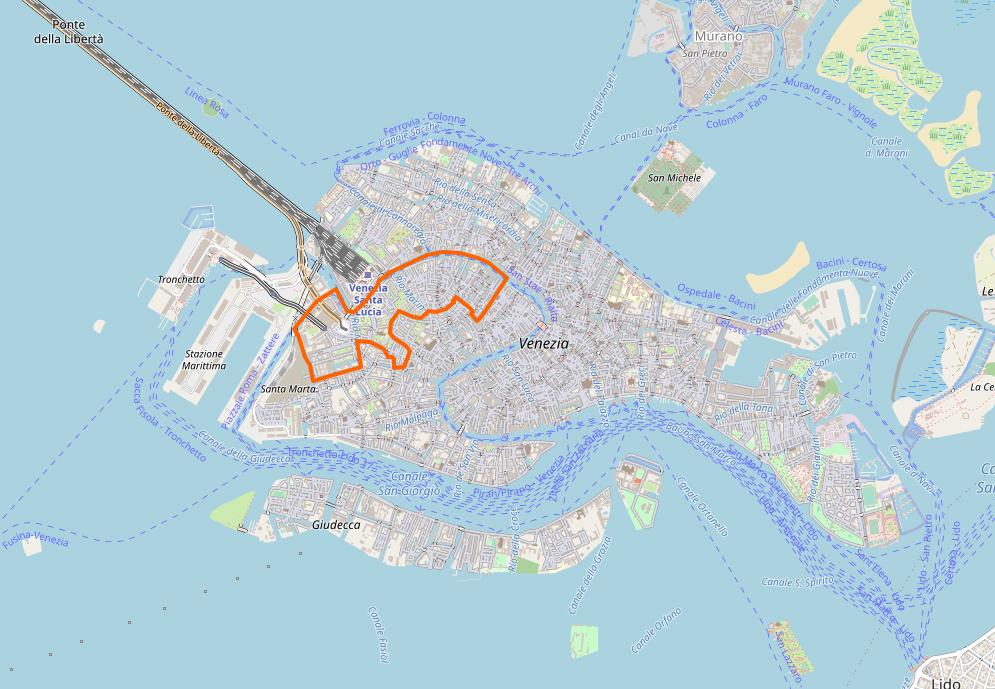The Sestiere Santa Croce is in the central western part of Venice, along the upper bend of the Grand Canal.
Today, the Tronchetto, the cruiser terminals and the Maritime station are parts of Santa Croce. They are, however, modern constructions reclaimed from the lagoon.

The name Santa Croce
The name means the Holy Cross, and comes from the now demolished church of Santa Croce, which stood close to the porto fluviale.
The church of Santa Croce was one of the most ancient in Venice, supposedly consecrated by the very first Bishop of Venice, Obelario, in the late 700s. It was demolished in the early 1800s.
The river harbour

The Sestiere Santa Croce is at the end of the Grand Canal, opposite San Marco.
Venice was an important trade hub for over a millennium. While the main harbour for sea going ships was in the area in front of St Mark’s, and the main market at Rialto, much of the merchandise destined to the rest of Europe went up the rivers of the Venetian hinterland.
Hence, much of these goods travelled the entire length of the Grand Canal, and the area at Santa Croce was where they left the city of Venice.
Santa Croce today
Just as the construction of the railroad and the railroad station devastated the western end of Cannaregio, the car bridge from the mainland destroyed the western end of Santa Croce.
To create what is now Piazzale Roma, a whole part of ancient Venice was destroyed to make room for roads, parking houses, bus terminal and more.
Consequently, the entire area today feels more like a bit of Mestre transplanted into the lagoon. Everything that makes Venice special and unique has here been sacrificed on the altar of modernity.
Churches in Santa Croce
Consecrated
Apparently, at least for some time, the parishes of Santa Lucia across the Grand Canal, and of Santa Maria di Murano, on Murano, were also a part of the Sestiere Santa Croce.

